If there was one single person who drew the most people to the Adirondacks, it just might be Seneca Ray Stoddard.
His parents, Charles Stanley Stoddard and Julia Ann Ray, gave him both of their names, along with a first name which evoked the Seneca people. They were Indigenous Iroquoian-speaking people who lived the farthest to the west within the Six Nations in upstate New York. It started him off with a strong connection to the Adirondacks.
Early social media
Before there was Facebook and Twitter and Instagram, there was the Carte de Visite, French for "visit card." These were small photo prints mounted on 2.5x4 inch cards which enjoyed incredible popularity for decades. Small and inexpensive, they carried images of a person, a family, or a place which people traded with each other.
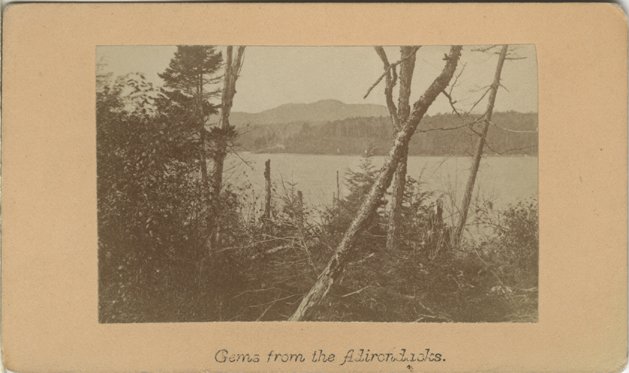
They grew out of the 1850s custom to present a calling card at the time of a social visit, and technological advances let the price of this new version be within the means of most people. They were also mailable, unlike the glass plates of early photography. Seneca Ray Stoddard's Adirondack landscape photographs were printed on these cards starting in the 1870s, offering a fascinating glimpse of an exotic place that was close enough to visit.
Another photography market that was highly popular was the stereoscope, which mounted two photos in a holder which offered the viewer left-eye and right-eye views of the same scene. By looking through the lenses, the viewer would see a single, three-dimensional, image.
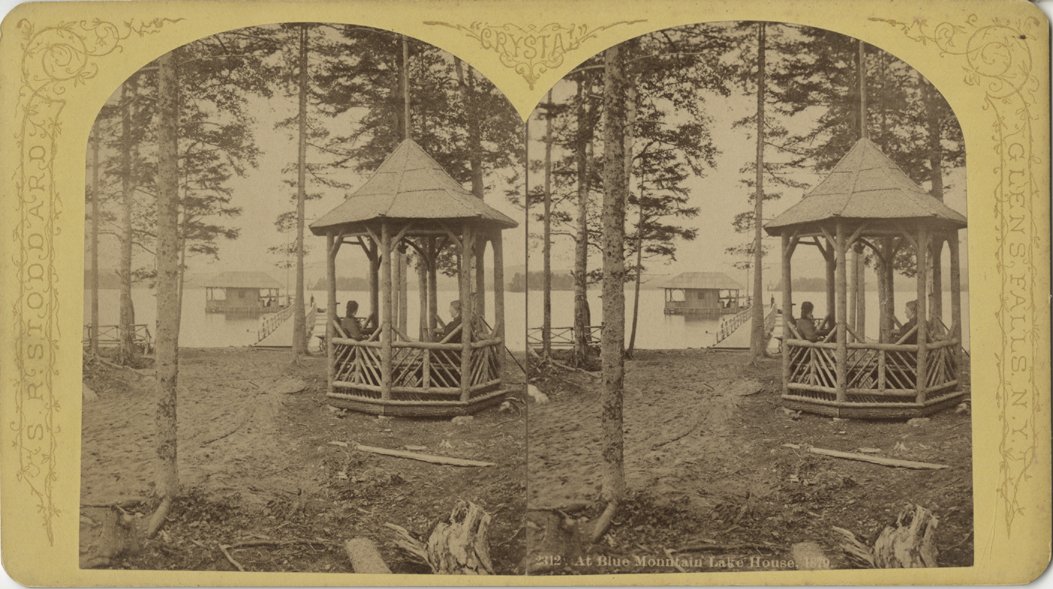
Scenes from the luxury hotels of the era such as the Blue Mountain Lake House (as seen above), began to mix with the beautiful scenery. As seen along the right-hand edge of the stereo card, "S. R. Stoddard's" studio was located in Glens Falls to the south, which began as a sign painting shop, but it was his Adirondack photos that caught on with the public.
Today, anyone can summer in grand style with one of the W.W. Durant Cruise & Dine outings. This flagship vessel, named after William West Durant himself, evokes the opulence of the Gilded Age. Enjoy an elegant lunch and dinner cruise with historic commentary, while viewing scenic points along Raquette Lake's 99 miles of shoreline.
Romance with nature
Two pivotal events were happening around this same time. First, in 1869, W.H.H. Murray's book "Adventures in the Wilderness" had been published, a collection of articles about a Boston clergyman's hunting and fishing trips. His rhapsodic prose and praise of the fresh mountain air created a longing for nature in the minds of city dwellers. This prompted the Durant family to plan a railroad through the area, and in 1876, William West Durant built a rustic compound on Long Point in Raquette Lake. This was a place to host potential investors and developers.
Word spread.
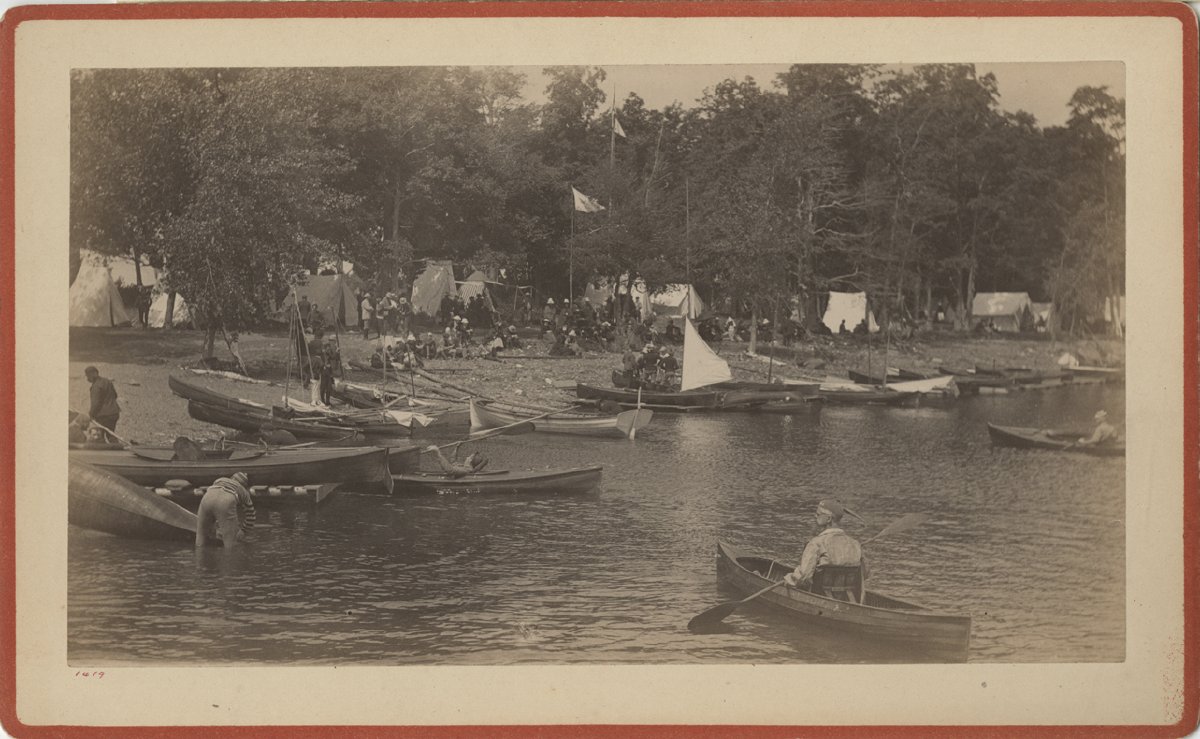
Soon, the rich families of the era were building rustic compounds where nature themes were combined with the luxury they were used to enjoying. As seen above, tents and cabins were popular with other economic classes. The lure of mountain breezes and cool lakes became irresistible to the people who lived in the "asphalt jungles" in the days before air conditioning.
To give an idea of how much people longed for green spaces as urban areas grew in density, many cities began realizing they needed "green space" when their citizens crowded cemeteries for a glimpse of grass and trees.
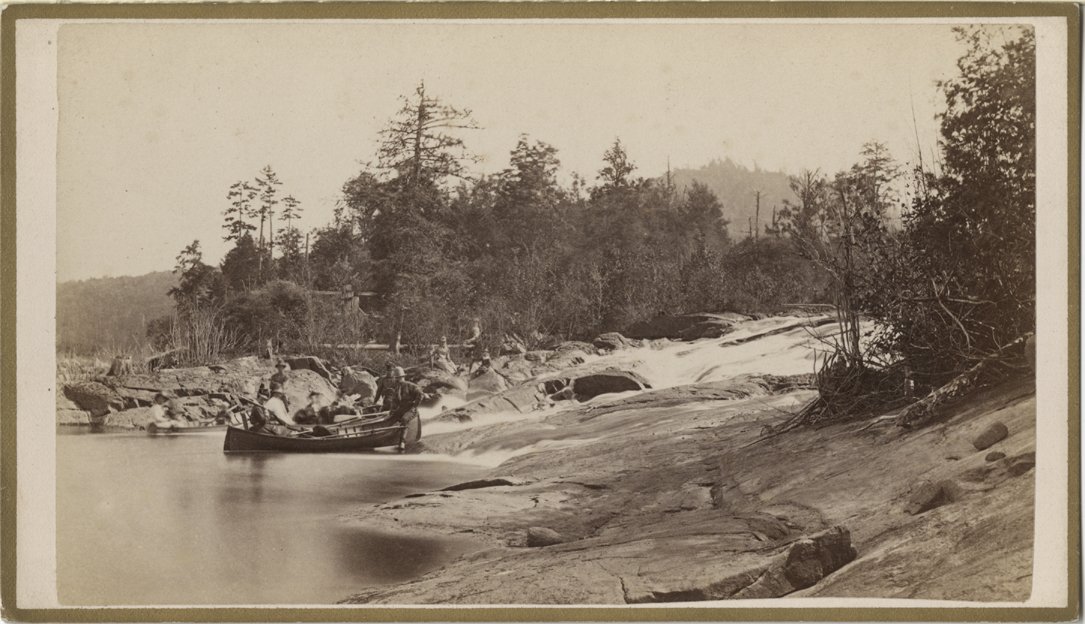
As other parts of the country replaced buildings with trees, the lure of the dramatic scenery found in the Adirondacks only increased in power. While the Great Camps hosted celebrities of the era and filled the society pages with the adventures "at camp," the less illustrious also came home with tales of their own fishing, boating, and hiking enjoyment, fueling successive waves of new visitors to see for themselves.
Today, Great Camp Sagamore has extraordinary themed weekends taking place at the wilderness estate of the Vanderbilt family, or take the walking tour for an Adirondack experience which takes less than two hours.
A pivotal place
Stoddard embarked on an adventure of his own, documenting the Adirondacks for wealthy land developers, routes for railroads, and then in 1878 Verplanck Colvin put him in charge of documenting the Topographical Survey of the Adirondacks. In 1892 this put him in the position of a person with the authority, and the materials, to be invited by the Forest Commission to give a talk and slide show for the New York State Assembly. His topic was how the logging industry of the time had dammed streams and drowned acres of trees.
Stoddard took his show on the road, touring the state to support the passage of the act creating the Adirondack Park. Observers considered him a major contributor to this successful conservation effort.
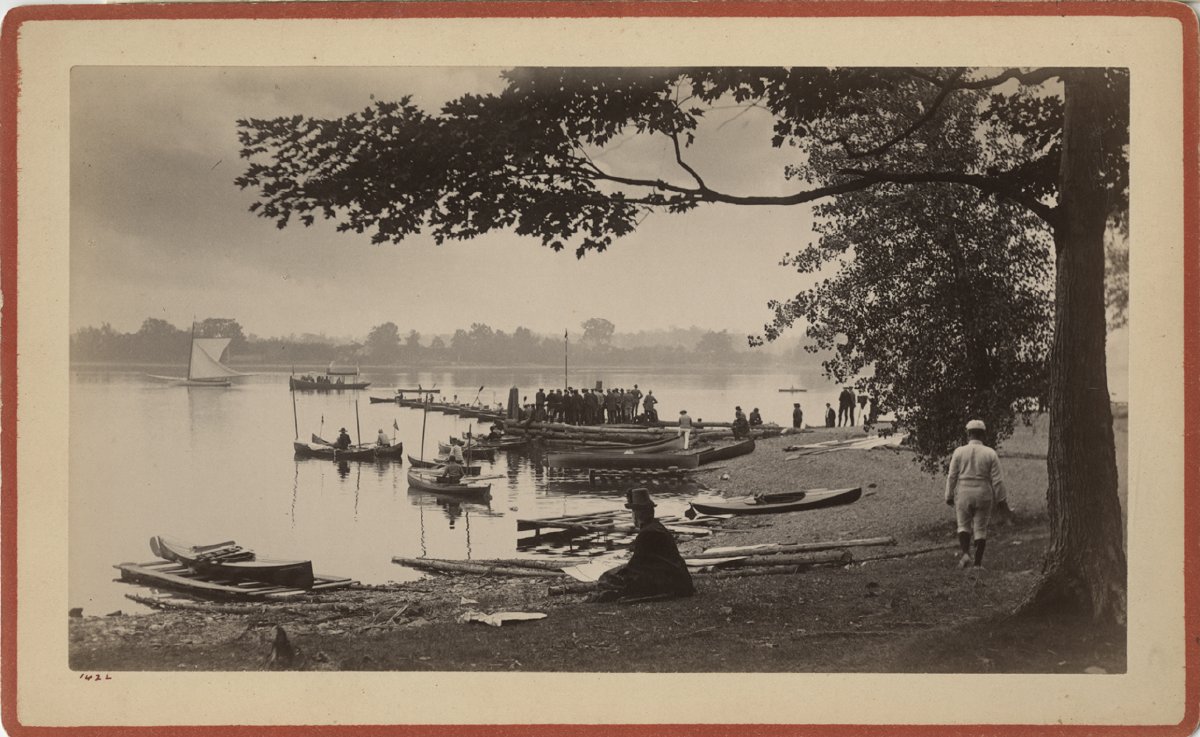
Seneca Ray Stoddard was also naturalist, a writer, a poet, an artist, and a cartographer. Starting in the 1870s he combined his skills to create guide books illustrated with engravings and photographs, producing updated editions until 1914. His paintings, souvenir items, booklets and maps, magazine articles, and traveling lectures were the foundations of a career in the growing recreational industry.
He had started this career at the age of 16 by painting decorated railroad cars, and he would travel and sketch many locations around the world. But he always returned to the Adirondacks.
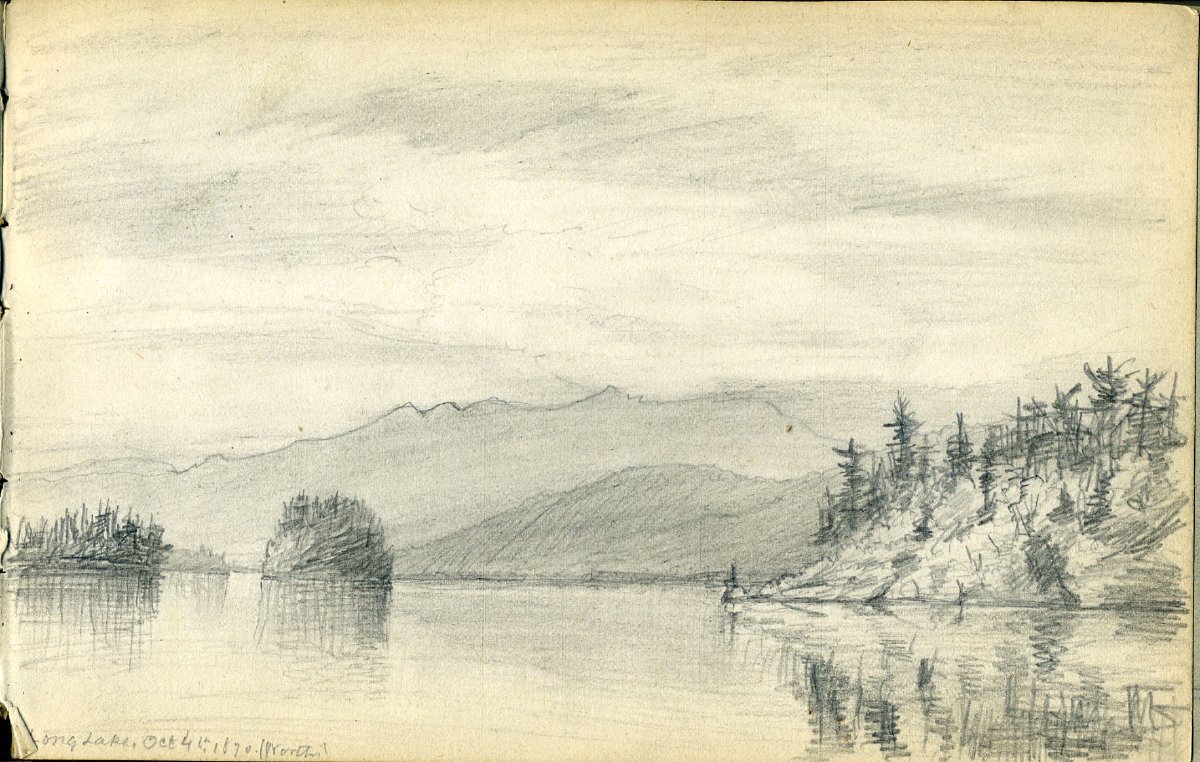
Still, it was with photography that he would make his unusual name famous.
The new exhibit at Adirondack Experience, The Museum on Blue Mountain Lake celebrates the whole history of the Adirondacks, from Indigenous peoples to the present day. Walk through a vintage train, see the actual cabin of author and ecologist Anne LaBastille, dress up to use dynamite in a cave simulation, and unclog a virtual log jam in a digital stream.
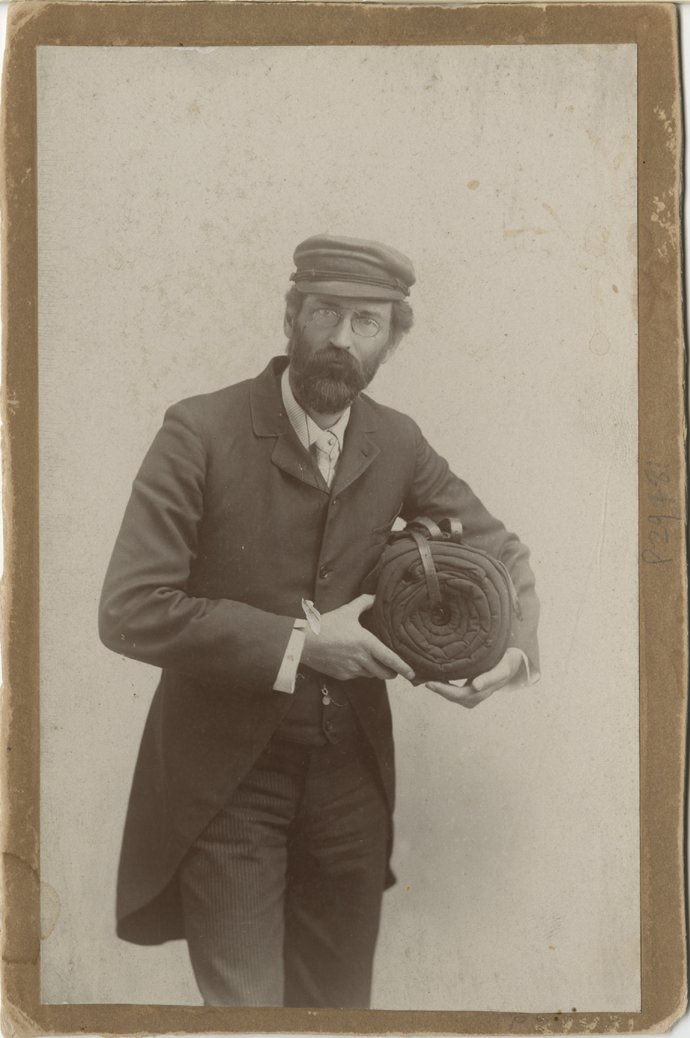
Most of Stoddard's life work is in two large photographic collections. A wide range of subjects are stored at the Chapman Historical Museum in Glens Falls, while 5000 to 6000 of his images form the themed collection at the Adirondack Experience, which is where these photos came from.
Header photo is a gelatin silver contact print made from the original negative, portrait of Seneca Ray Stoddard (1844-1917) wearing a straw hat. Catalog Number 1976.052.0327 (All photos via the museum's research collection. Fair use copy permitted for research, study, or investigational purposes citing the Adirondack Museum. Any other use requires written permission.)





